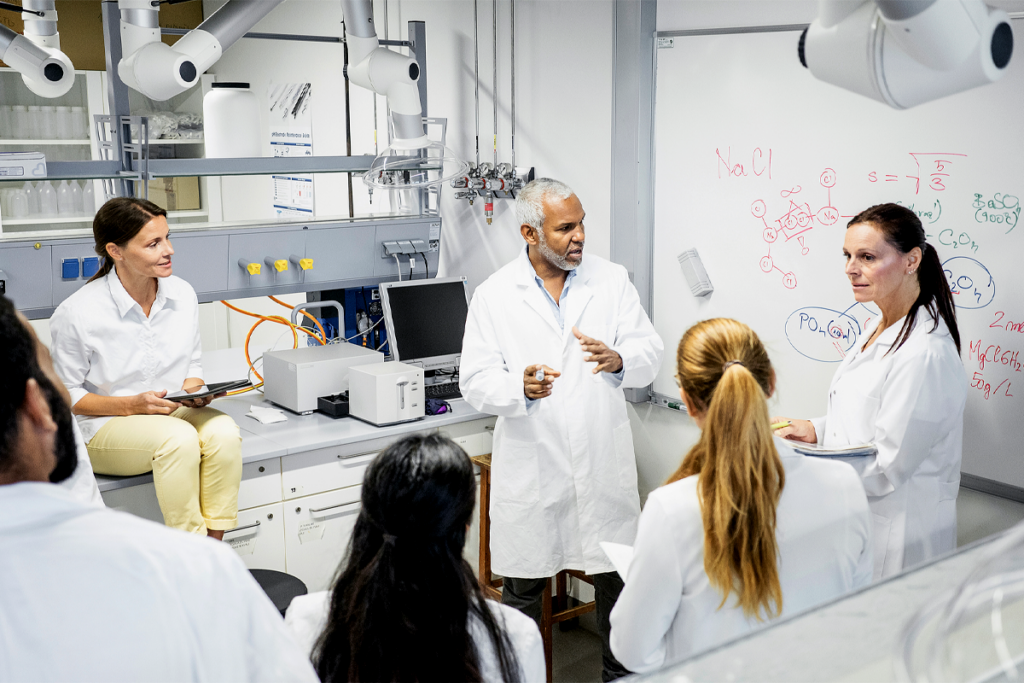Later this week, tens of thousands of neuroscientists plan to take to the skies, roads and rails as part of an annual journey to the Society for Neuroscience (SfN) meeting. But the travel associated with the event can generate an estimated 54,000 to 69,600 metric tons of carbon dioxide equivalents, according to a paper published in eNeuro in September. At the high end, that’s equivalent to the annual carbon emissions from the energy use of about 8,800 homes in the United States.
“I think conferences are an essential part of academic life,” says lead investigator Elizabeth Becker, associate professor of psychology at Lawrence University in Appleton, Wisconsin. “But what we’re not thinking about is the impact of the model that we’ve created and stuck with.”
This is not the first time neuroscientists have flagged the meeting as a powerful contributor to greenhouse gases. In 2019, more than 1,200 neuroscientists signed a petition demanding that SfN “act on the climate crisis.” The petition suggested that a smaller in-person meeting with more virtual attendees would result in less air travel and could significantly curb emissions related to SfN.
But with the 2023 SfN meeting scheduled to start Saturday in Washington, D.C., more than 25,000 neuroscientists are still expected to attend in person, even though some are indeed weighing carbon emissions against the benefits of being face to face at the much-loved meeting.
“Part of the appeal of SfN is its size, for better or worse — getting people together from across the globe and getting to interact with colleagues that you wouldn’t see [otherwise],” says Kathryn Lenz, associate professor of behavioral neuroscience at Ohio State University in Columbus, who was not involved in the study. “I’d hate to see something that general go away entirely.”
B
For that San Diego meeting, the report estimated total travel emissions of 38,000 metric tons, or 69,600 metric tons when taking into account the extra effect of greenhouse gases emitted while flying at altitude. Travel-related emissions for meetings in Washington, D.C. or Chicago, Illinois (the other two locations where SfN is routinely held) are closer to 54,000 metric tons at the high end, Becker’s team calculated using 2018 attendee data. The reduced estimate is due to the higher use of shorter-haul flights, and fewer flights overall. Based on these figures, limiting air travel is the best way to cut emissions associated with the SfN meeting, Becker and her team wrote.
In the study, Becker and her colleagues proposed two alternatives to the current structure of the SfN meeting, which regularly brings a crowd of researchers that rivals the population of a small city.
They suggested that instead of being held at a single location, the conference should take a synchronized “multihub” approach, in which people would gather at locations around the world and limit travel. That could reduce conference-related carbon emissions between 23 and 78 percent, depending on the number of hubs worldwide and how many people attend virtually, though the authors also wrote that attendees might worry the “hub” model could limit international collaboration.
The other option is a fully virtual meeting, which, Becker says, might make it easier for disabled scientists or those from low- and middle-income countries to attend. A completely virtual meeting could lead to a more than 99 percent reduction, the report found.
T
The goal was to reduce emissions by about 50 percent worldwide by 2030, he says, referring to the overall international target set by the Intergovernmental Panel on Climate Change in 2018, and the hub meeting model would be in line with that target. Besides, “even in a heating planet, we do need person-to-person contact,” he says.
Some neuroscientists who still crave that contact are taking steps on their own to limit their carbon footprint when they travel to the meeting. Martin Munz, a postdoctoral researcher at the Institute of Molecular and Clinical Ophthalmology Basel in Switzerland, tries to get the most out of every trip he takes, sometimes scheduling local talks to line up with the meeting, or tacking on a visit with family after a conference is over, thus limiting overall air travel.
Xin Jin, assistant professor of neuroscience at the Scripps Research Institute in La Jolla, California, has taken it a step farther; she attends SfN only when it is hosted in nearby San Diego. She has also stopped eating meat, because of environmental concerns. “I do appreciate that people are being more and more aware of what we have been doing to our planet,” Jin says. Still, she says she sees value in having an annual in-person SfN meeting.
Others are more skeptical of the need to attend in person. Peter Scheiffele, professor of cellular and developmental neurobiology at the Biozentrum of the University of Basel in Switzerland, has skipped the in-person meeting since the pandemic and has limited the number of long-distance flights he takes, to reduce his carbon footprint. Thanks to improvements in technology, he says, a fully virtual conference could meet researchers’ needs.
A
SfN organizers did not publicly comment on the report, and an SfN spokesperson declined to discuss the matter with Spectrum. But the organization plans to offer select virtual options at this year’s meeting, including live streams of up to 24 lectures and 18 symposia, alongside the in-person events.
Neuroscientists are not alone in debating how to hold large meetings responsibly in a changing climate. Members of the American Geophysical Union have discussed the effects of its annual meeting, which can draw about 25,000 attendees. In December last year, just before a plenary session, two researchers unfurled a banner that read “Out of the lab & into the streets,” hoping to spur scientists to engage with the public about our “dying planet.” The two were sanctioned by the society but later reinstated.
Commercial aviation is “something we want to do; it’s not something we need to do,” says Peter Kalmus, one of the two researchers and a climate scientist at NASA’s Jet Propulsion Laboratory, who adds that his thoughts on climate change are his own and do not represent NASA or the lab. Right now, he says, “our institutions are preventing us from switching into climate emergency mode. And preserving the traditional way of having these big fly-in academic conferences is part and parcel to that.”
For now, though, the big event for neuroscientists remains an in-person SfN. “By default, everyone’s going,” Jin says, and many researchers are not willing to give that up. “It’s very special because there’s no other conference doing that. If there were three SfN equivalents, we can maybe shut down the other two. But this is the party.”






